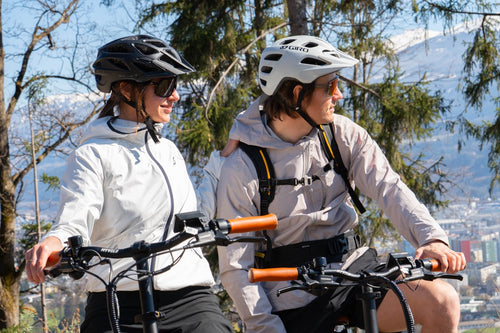

Cadence & RPM on the e-bike: What is the purpose of the cadence display on the screen?
Modern e-bikes have long been high-tech on two wheels. In addition to speed, range, and assistance level, many displays now also show cadence or RPM. But what's behind this metric — and why is it worth taking a look at it as an e-bike rider?
Von Isatou Schulz |
2 minutes read time

What is cadence or RPM?
The terms cadence and RPM (revolutions per minute) essentially describe the same thing: How often the pedals or cranks rotate per minute . This is the pedal frequency.
👉 You can find detailed information in our glossary article on RPM and here on cadence.
Why is cadence important on an e-bike?
Even though the electric motor on an e-bike provides a significant boost, that doesn't mean your own pedaling power doesn't matter — quite the opposite! Cadence influences:
-
Motor assistance: Many e-bike motors (e.g., Bosch, Shimano, Bafang, DJI, or Brose) operate most efficiently between 60 and 90 RPM. Pedaling slower means you're not using the motor at its optimal speed.
-
Battery consumption: A cadence that is too low can mean that the motor has to work harder – and thus draws energy more quickly.
-
Protects your joints: If you pedal smoothly instead of “pounding”, you ride healthier and put significantly less strain on your knees and hips.
-
Riding dynamics: With a consistent cadence, you ride more harmoniously, quietly and efficiently – especially on longer tours.
How can I use the cadence on the e-bike display?
Many modern e-bike displays, such as the Bosch Intuvia, Purion 200, or Kiox 300, show you how fast you're pedaling in real time. And this can be cleverly utilized:
1. Analyze your own driving behavior
Monitor your RPM values: Are you riding uphill at 50 RPM and on flat ground at 85? Perhaps you need a different assist level or should shift gears more frequently.
2. Drive more efficiently
Many e-bike motor manufacturers recommend a cadence of 70–90 revolutions per minute. Try to stay within this range— your battery will thank you.
3. Learn to shift gears
If you see your cadence dropping significantly below 60 RPM, a lighter gear is recommended. If it rises above 100, a heavier gear may help. This way, you'll intuitively find the right gear ratio.
4. Targeted training
If you consciously vary your cadence, you can specifically train strength (at a low cadence) or fitness (at a high cadence) - ideal for e-bike riders who want more than just a comfortable ride.
Conclusion: RPM display as a smart driving assistant
The cadence display on the e-bike display is far more than a technical gimmick. It helps you ride more efficiently, healthily, and with more battery power. Knowing and using your cadence will get the most out of your motor, battery, and muscle power.
If you want to learn more about RPM or cadence, take a look at our e-bike glossary – there you will find all the important terms explained simply.
Final tip: If your current display doesn't yet show cadence, it might be worth upgrading – or you can connect your e-bike to an additional cadence sensor via an app. This way, you can always keep an eye on your performance.




